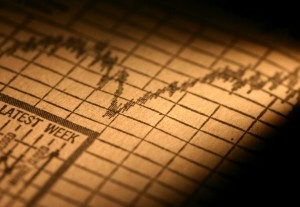How to invest post Sandy? What can Katrina and 9/11 data tell us?
Natural and man made disasters can and do affect our US economy. The bad news is most any historian will tell you economic affecting disasters continuously happen on a regular bases over time. The worse news is man made or natural disasters can affect your lifestyle if you’re not prepared financially.
Katrina and 9/11 Data
A few years ago I collected data on how Hurricane Katrina and 9/11 affected stocks by industry segment. Specifically, I was comparing how high beta stocks industry segments verses negative or low beta stock industry segments reacted after the disasters. The good news in those two specific examples they responded with uncanny predictability. In other words, with very little exception they reacted nearly exactly how I expected them to react. As a disclaimer, the past results do not predict future results so make your own decisions and do you own due diligence.
Hurricane Sandy Financially Speaking
In the financial aftermath of Hurricane Sandy, billions of dollars of infrastructure repairs and residential restorations to be spent over the next 24 months. So, where should you consider putting your money? I’m focusing on looking at high beta industry segments verse negative and low beta industry segments.
[maxbutton id=”1″]
What is Beta?
Stocks with a beta of “1.0” in theory follow the market. Hence, Index Funds that consist of all stocks in the whole market will by definition have a beta of 1.0. Stocks that tend to go up faster when the economy is good and fall faster when the economy is bad usually have a beta in the 1.5 – 2.5 range. Automotive, New Residential Construction and luxury items are traditional high beta stock industry segments. Stocks and industry segments that tend to be less volatile may have a beta coefficient of 0.1 to 0.9. Then there are negative beta stocks. When things are bad gernerally do well or not near as bad as other stocks. For example, most anything Japan needed after their disaster were negative beta stocks. Companies that make portable generators, water purification plants, lumber, civil infrastructure, gold securities, silver securities and basic food stuffs are examples of negative beta stock segments.
Why are Negative Beta Funds Important?
When the market is crashing due to an disaster, it’s usually a good strategy to have some lower beta or negative beta investments in your portfolio to help reduce the risk of losing enough assets to change your lifestyle drastically.
Examples of Market Segment Reactions after 9/11 and Katrina to High Beta and Negative Beta Stock Segments. Updated 2006.
1. High Beta Stock Price Reactions
Insurance Broker Segment – went down sharply after 9/11 and Katrina
Semi-Conductors – went down after 9/11 and Katrina
Most other segments – (other than the ones mentioned below) went down after 9/11 and/or Katrina
2. Negative Beta Stock Price Reactions
Oil and Gas – the Standard and Poors 1500 average did poorly however smaller cap companies dramatically increased after 9/11 and Katrina
Utilities – Went up 11.2% after Katrina but averaged –14.5% from 2000 – 2005
Home Improvement – Spiked after 9/11 and Katrina
Aerospace & Defense – Spiked after 9/11
Air Freight & Logistics – Spiked after 9/11 and Katrina
Bio-tech – Spiked after 9/11 and Katrina
Building Products – Spiked after 9/11 and Katrina
Commodity Chemicals – Increased after 9/11 and Katrina
Construction Materials – Increased after 9/11 and Katrina
Gold – Increased after 9/11 and Katrina
Construction and Engineering – Spiked after 9/11 and Katrina
IT – went up 1% after Katrina but averaged (-17.1%) from 2000 – 2005
Health Care – went up 6% after Katrina but averaged (-4.7%) from 2000 – 2005
The bottom line: the financial markets reacted to both these man-made and natural disasters predictably.
[maxbutton id=”2″]
Source: Standard and Poors Industry Surveys – July 2006, Value Line
Copyright – Doomsdayfund.com Mike Dunn– 2010, 2011, 2012
